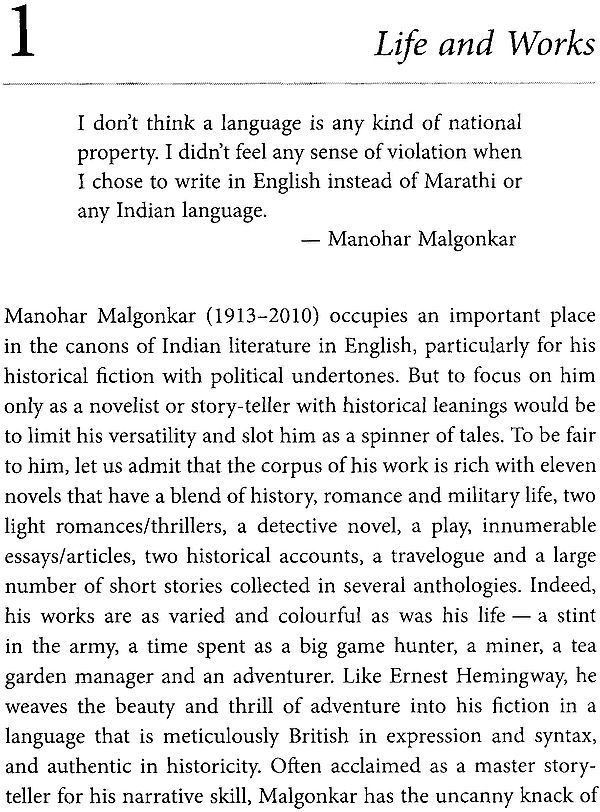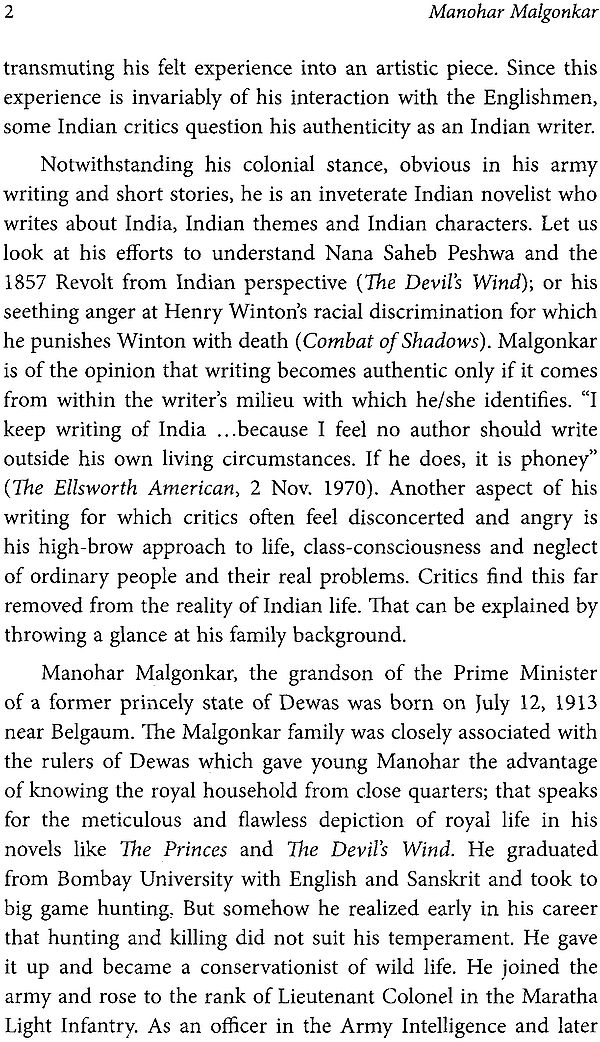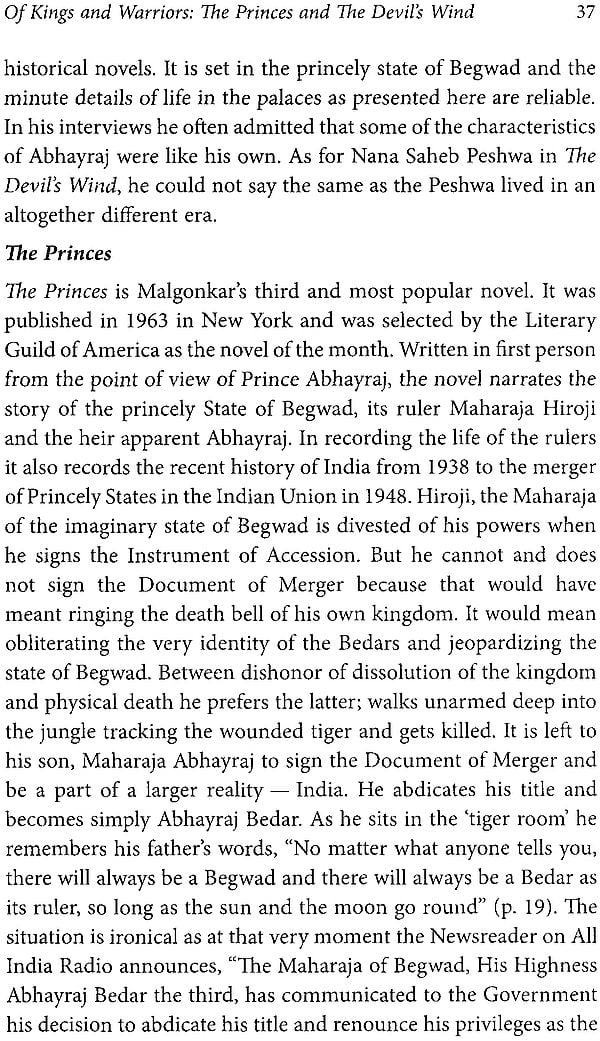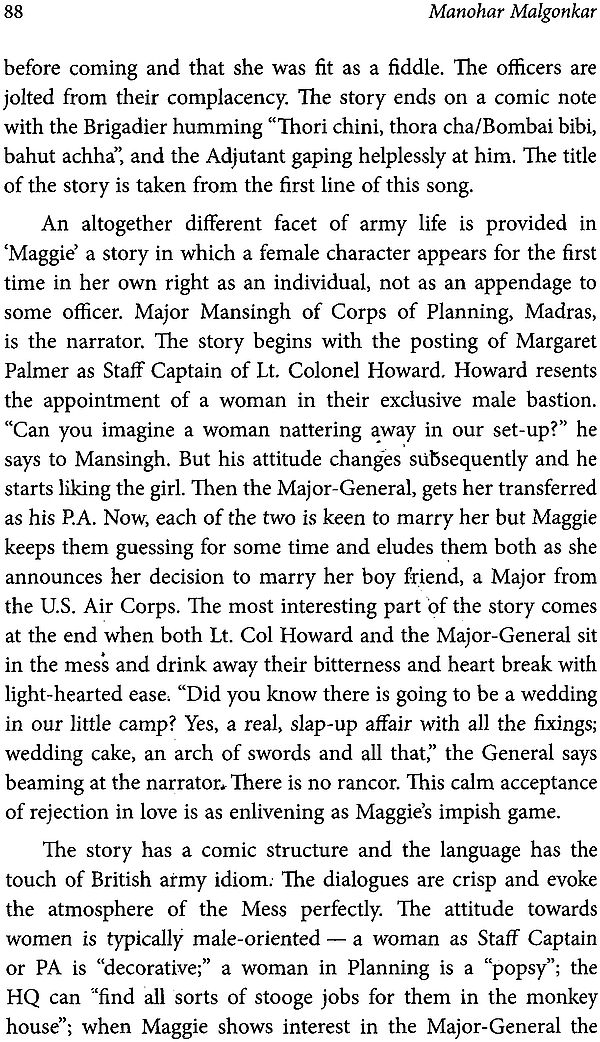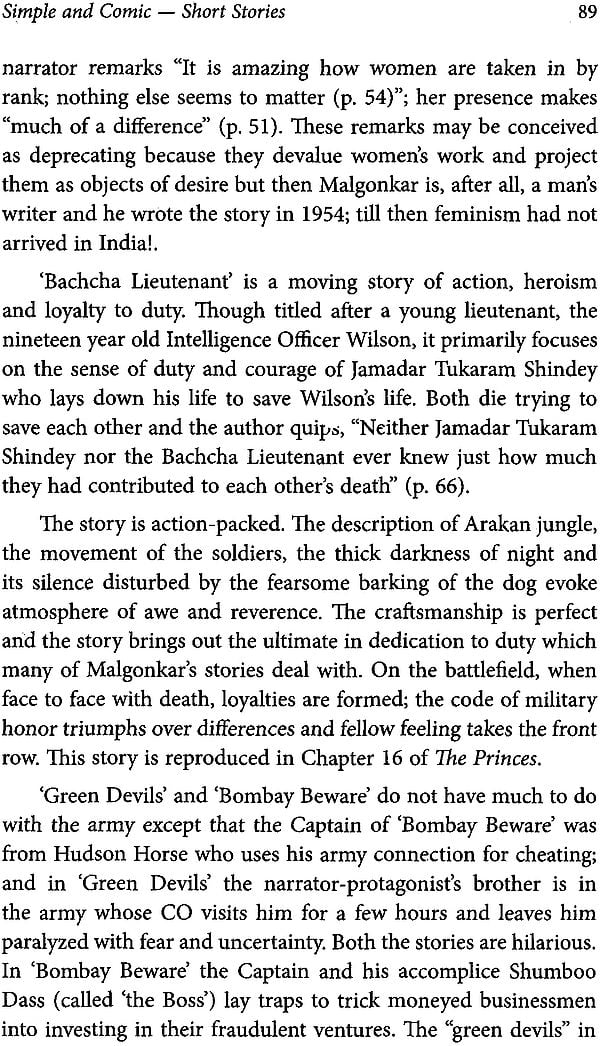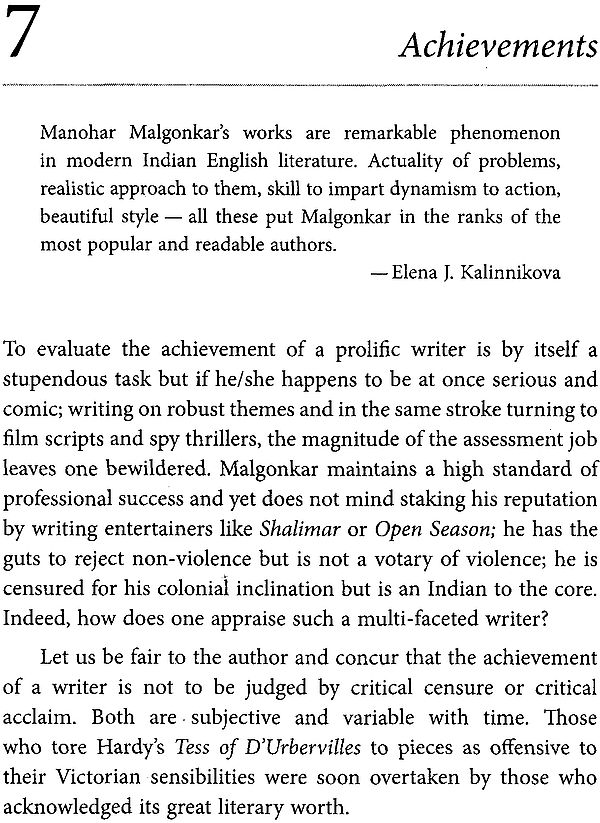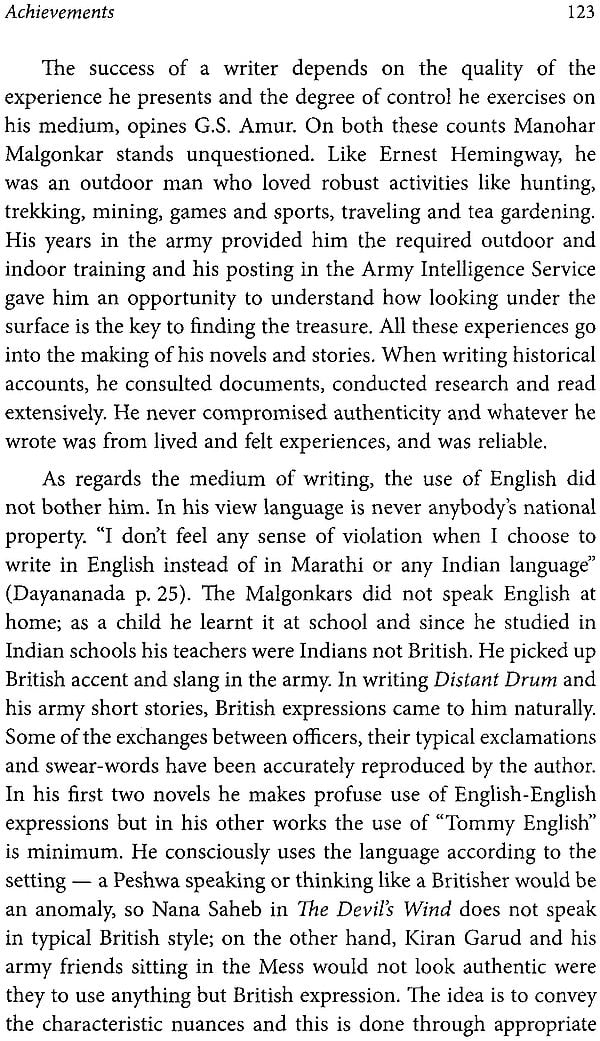
Manohar Malgonkar (Makers of Indian Literature)
Book Specification
| Item Code: | NAN937 |
| Author: | Usha Bande |
| Publisher: | Sahitya Akademi, Delhi |
| Language: | English |
| Edition: | 2016 |
| ISBN: | 9788126051007 |
| Pages: | 140 |
| Cover: | Paperback |
| Other Details | 8.5 inch x 5.5 inch |
| Weight | 200 gm |
Book Description
Manohar Malgonkar (1913-2010) occupies an important place in the canons of Indian literature in English, particularly for his historical fiction with political undertones. History was his forte but he was a writer and artist first and as such artistic integrity coupled with depth of historical sense make the works interesting and authentic. Born on July 12, 1913 near Belgaum, Manohar Malgonkar was the grandson of the Prime Minister of a former princely state of Dewas. The Malgonkars were close to the rulers of Dewas and young Manohar got an opportunity to experience life in the royal households closely which is reflected in The Princes and The Devil's Winds. Often acclaimed as a master story-teller for his narrative skill, Malgonkar has the uncanny knack of transmuting his felt experience into an artistic piece. The corpus of his work is rich with eleven novels that have a blend of history, romance and military life, two light romances/thrillers, a detective novel, a play, innumerable essays/ articles, two historical accounts, a travelogue and a large number of short stories collected in several anthologies. Indeed, his works are as varied and colourful as was his life - a stint in the army, a time spent as a big game hunter, a miner, a tea garden manager and an adventurer.
Usha Bande, till recently Fellow, Indian Institute of Advanced Study, Shimla and also Visiting Professor at Vishwa Bharati University, Shanti Niketan (WB), was on the faculty of English Literature in Govt. College for Women, Shimla. She retired as Principal Govt. College, Arki after a long and distinguished teaching career. She has numerous research papers and more than a dozen books to her credit. Her latest publication is Adventure Stories of Great Writers published by Kitaab, Singapore. Her other major publications are Forts and Palaces of Himachal Pradesh which is a coffee table book and also Writing Resistance published by IIAS, Shimla.
To write on Manohar Malgonkar was for long on my agenda but somehow I could not take it up for one reason or the other. Then came an opportunity with Sahitya Akademi's offer to write a monograph and I just grabbed it, happy that now I am bound by time limit and would finish the work in right earnest; but that too bounced and I got inordinately delayed because of circumstances beyond my control.
I was introduced to Manohar Malgonkar in the 1960s by my father, Manohar Bande, an army man, a voracious reader and an excellent story teller like Malgonkar. He was fond of Malgonkar's writings particularly short stories and Distant Drum with which he could identify. We would eagerly await Malgonkar's new book, scramble to get hold of it first, be the first to read it and then discuss it; it was a delightful time, indeed.
Malgonkar is not a complex writer. The story element running through his works can be likened to the flow of a swift stream. The language is simple; expressions are swift and the dialogues have English-English touch; the atmosphere of army establishments appeared familiar to us.
Nonetheless, Malgonkar posed difficulties - reading for pleasure is one thing, reading for critiquing is quite another. His simplicity became a hurdle. What new do I write when so many aspects have been thrashed by critics and scholars already? Besides, the critical works read all alike, there was so much repetition, everybody saying same things in different words, except scholars like Jasbir Jain and a few others who had something new to offer. For long I was flabbergasted. The writing process just could not begin. There was no tip, no thread to hold on to and start. Then I came across James Y. Dayananda's book published for Twayne–lucid, thorough, original! And I knew where to start from, what to write, which strand to clutch. And within a short span I could complete this monograph.
Writing is never an isolated activity. So many people - friends, family, colleagues and librarians come forward to help - some openly, some unobtrusively and some invisibly and when you finish writing they are there standing at a distance and smiling; the elders say "shabash', peers congratulate you and youngsters heave a sigh of relief for having stopped the "boring" "tick-tock' on the computer.
I take this opportunity to thank Prof. Malashri Lal for providing me rare and unavailable books; to Sahitya Akademi for assigning me this project and to Ms. Gitanjali Chatterjee, Deputy Secretary, Sahitya Akademi for her encouragement and patience. A special word of thank to Ms. Durgesh Chaurasia for typing out with speed and accuracy. One cannot thank one's family enough but they know how and what I feel. That says it all!
Contents
| Preface | vii | |
| 1 | Life and Works | 1 |
| 2 | The Martial Code: Distant Drum and Cactus Country | 17 |
| 3 | Of Kings and Warriors: The Princes and The Devil's Wind | 36 |
| 4 | Violence/Non- Violence: A Bend in the Ganges and Combat of Shadows | 61 |
| 5 | Simple and Comic: Short Stories | 84 |
| 6 | Miscellany: Histories, Thrillers and Entertainers | 99 |
| 7 | Achievements | 122 |
| Select Bibliography | 128 | |
| Chronology | 131 |
Sample Pages
